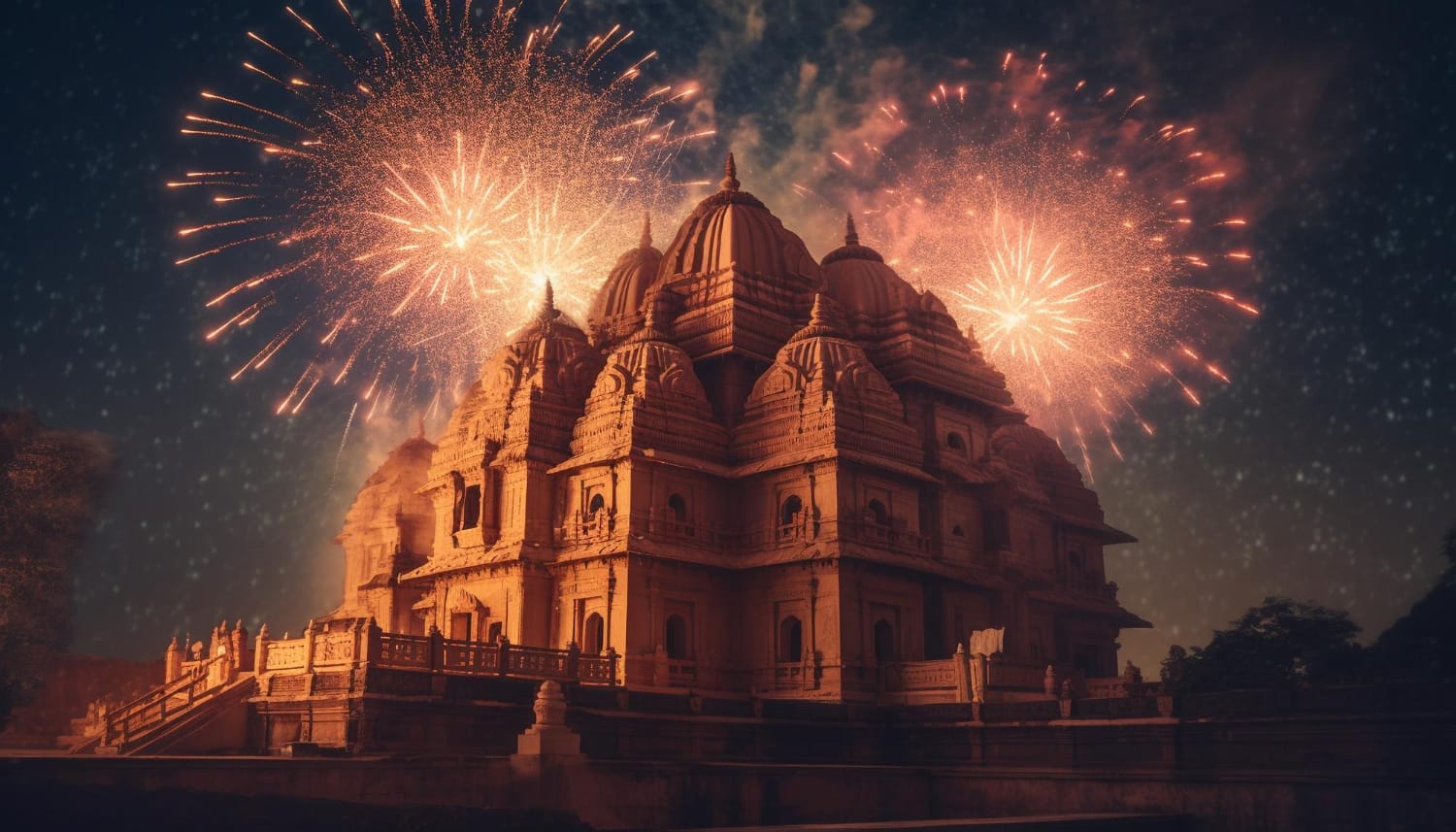Discover the rich artistic heritage of Uttar Pradesh, where painting traditions date back to prehistoric times, with cave paintings in Sonbhadra and Chitrakoot depicting various aspects of life. The Mughal Era marked a golden period for painting, notably under Emperor Jahangir's patronage, showcasing unique styles and themes. Bundelkhand witnessed a pinnacle of painting excellence during the reconstruction of Keshav Dev temple in Mathura by the King of Orchha, portraying scenes from Lord Krishna's life. Additionally, the Garhwal School flourished in Uttar Pradesh, sponsored by the Kings of Garhwal, contributing to the region's diverse artistic landscape. Ayodhya, steeped in mythological lore, stands as a cradle of art and culture, where painting and rock art reflect the city's timeless allure and rich heritage.
Murals: Ayodhya is home to several temples adorned with exquisite murals depicting scenes from Hindu mythology and epic tales like the Ramayana. These vibrant frescoes, often found in temple complexes and palaces, showcase intricate details and vibrant colors, serving as visual narratives of religious and cultural significance.
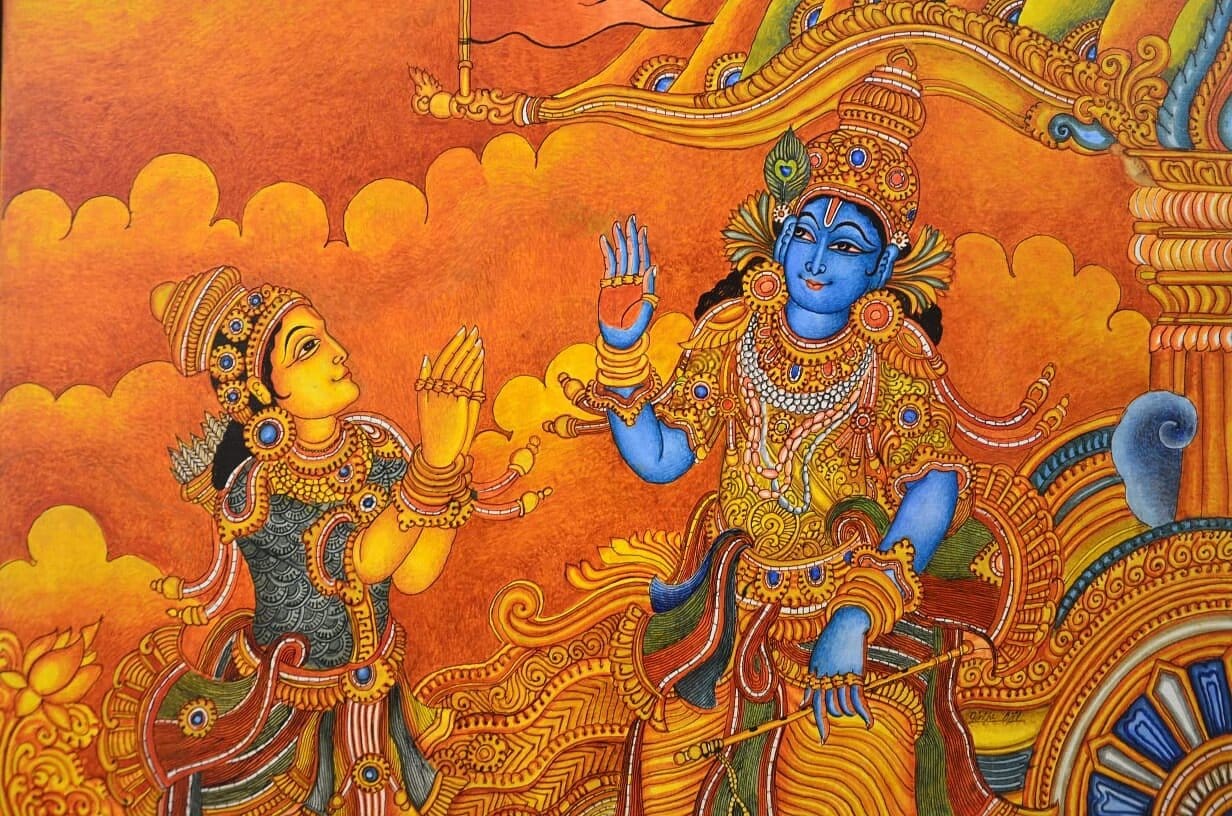
Miniature Paintings: The tradition of miniature painting, characterized by intricate details and meticulous craftsmanship, flourished in Ayodhya under royal patronage. These miniature artworks, known for their vibrant colors and delicate brushwork, often depicted mythological themes, courtly life, and poetic narratives, reflecting the aesthetic sensibilities of the era.
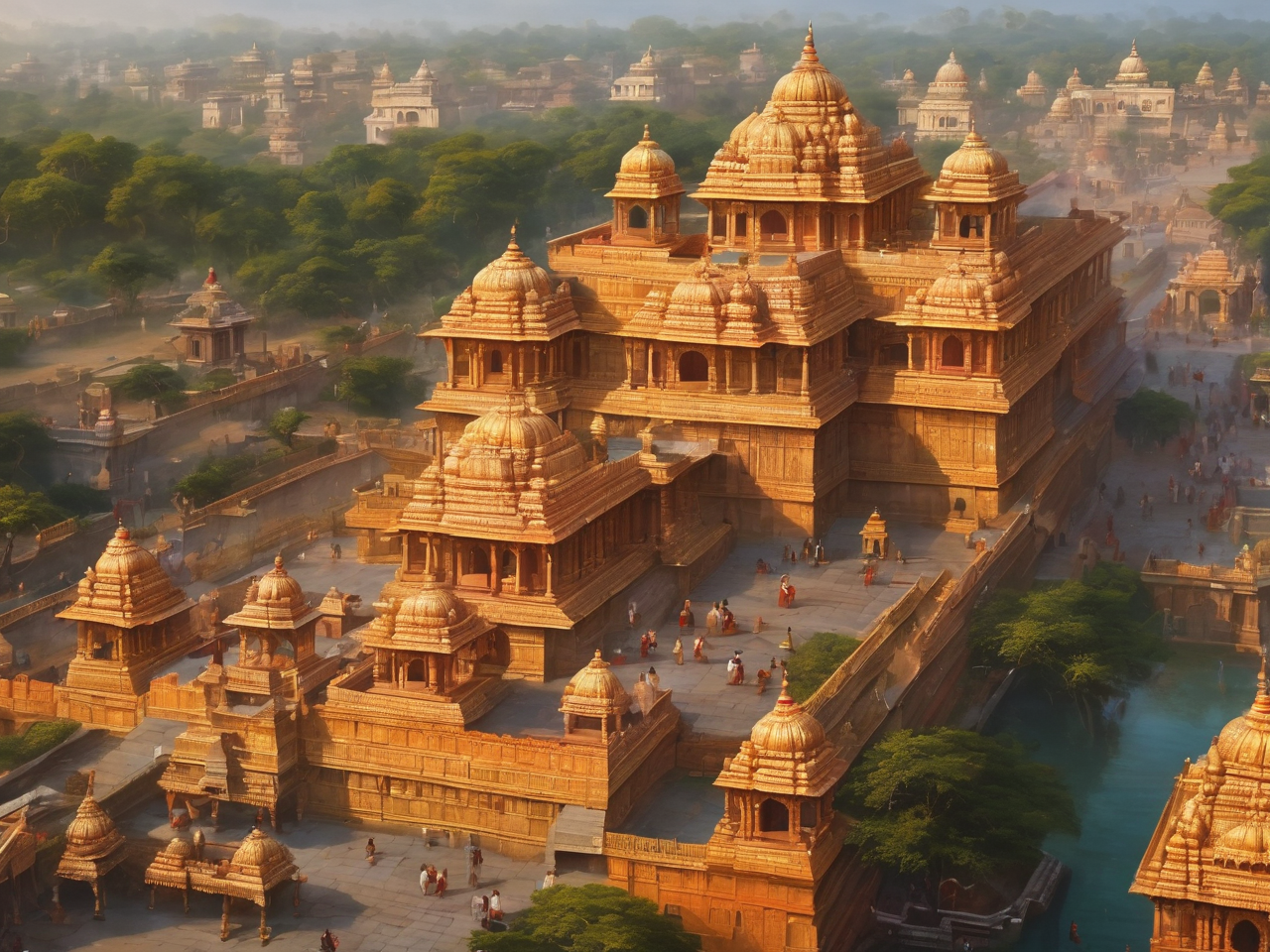
Folk Art: Ayodhya's artistic heritage also includes vibrant folk art forms like Madhubani and Kalamkari, which thrive in the region's rural communities. These folk paintings, characterized by bold lines, vivid colors, and geometric patterns, adorn walls, floors, and household items, serving as expressions of rural life, beliefs, and traditions.

Rock Painting
Rock painting, an ancient form of artistic expression, has been practiced in Ayodhya and its surrounding regions for millennia. These prehistoric artworks, found in natural rock shelters and cave complexes, offer glimpses into the lives, beliefs, and artistic endeavors of ancient civilizations that once thrived in the area.
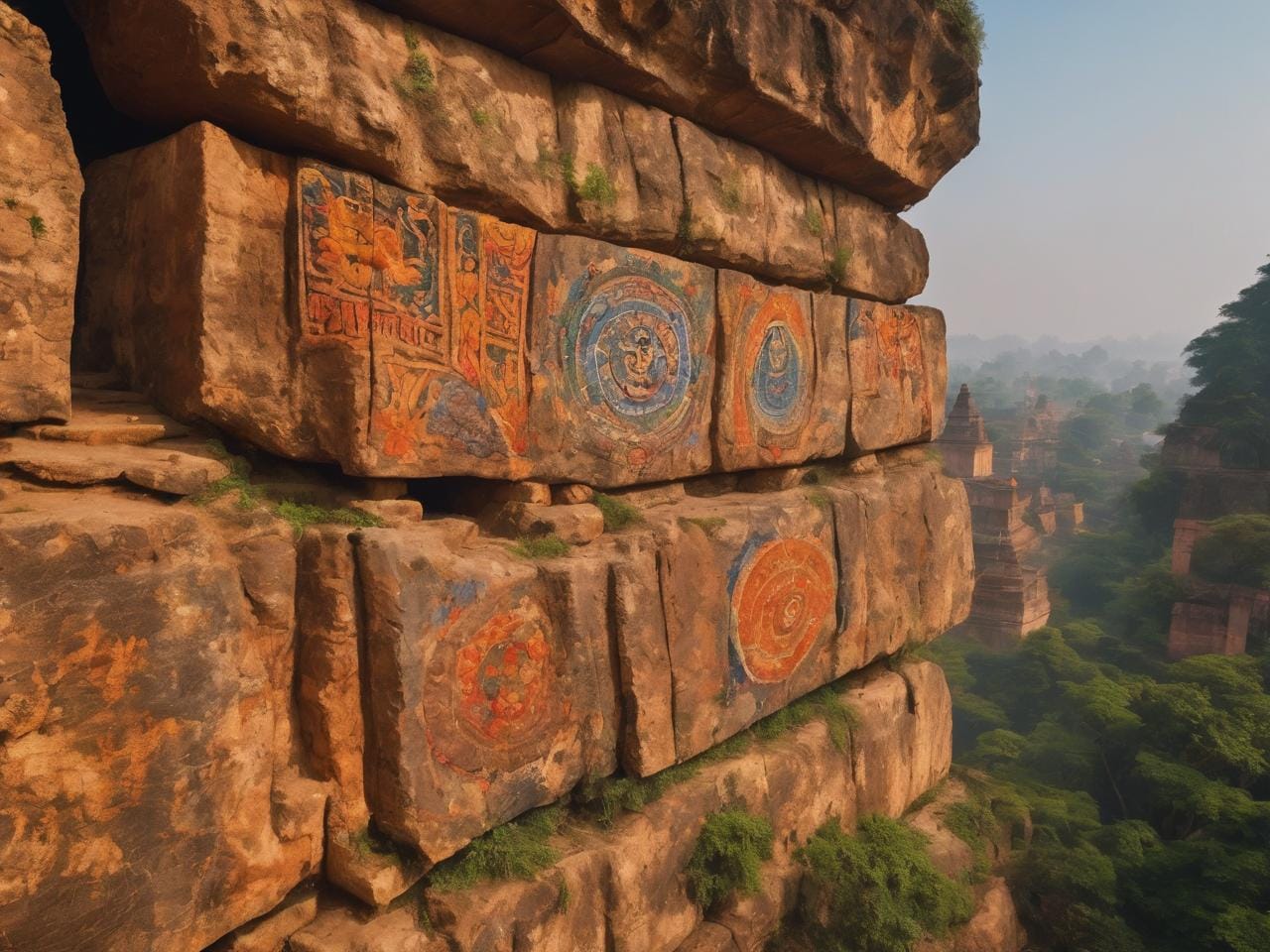
Historical Significance: The rock paintings of Ayodhya are invaluable historical artifacts, providing insights into the cultural, social, and religious practices of ancient civilizations that inhabited the region. These artworks, dating back thousands of years, depict hunting scenes, religious rituals, and everyday life, offering a window into the past.
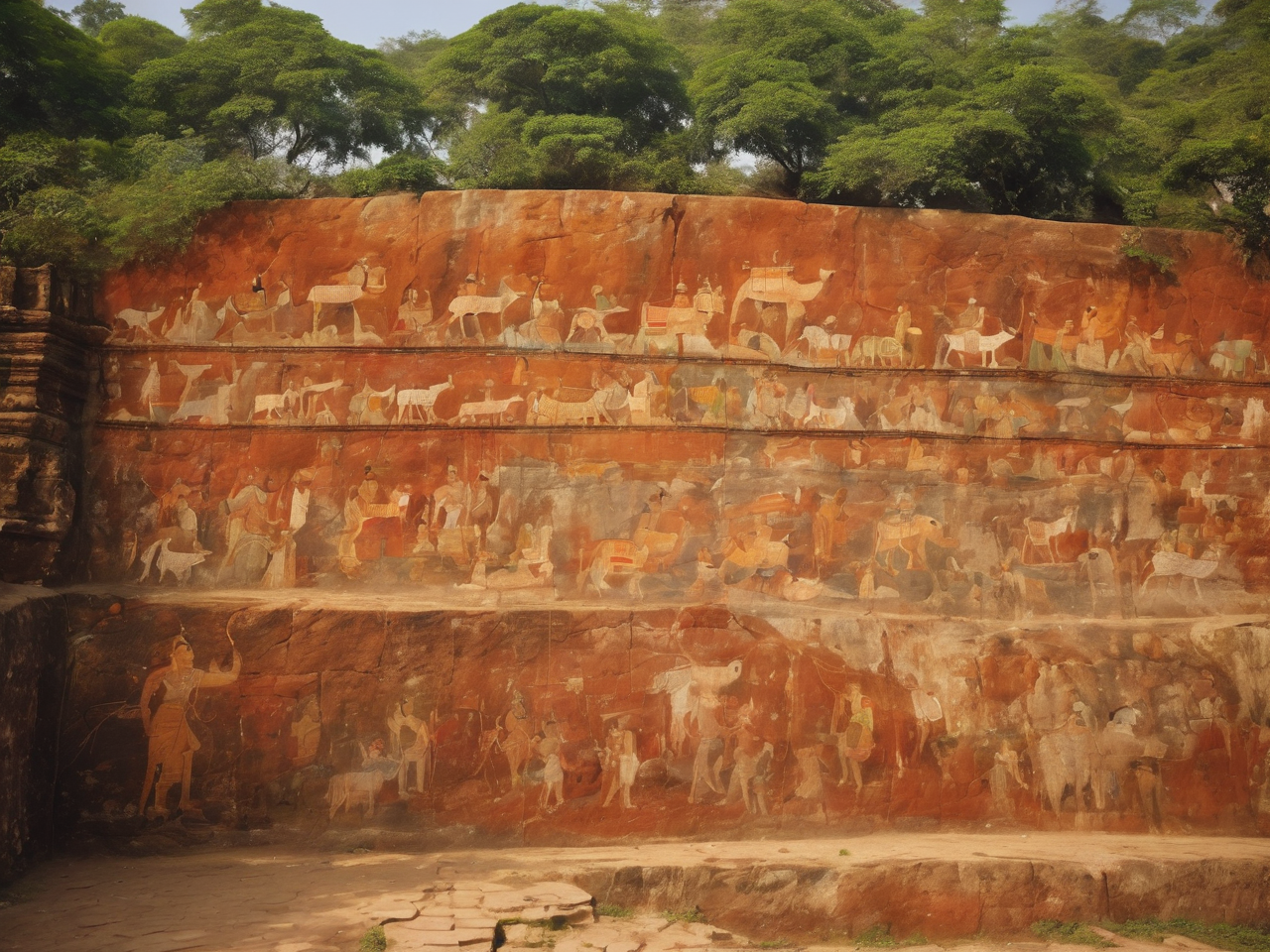
Cultural Heritage: The rock paintings of Ayodhya are a testament to the region's rich cultural heritage and artistic legacy. They reflect the creative impulses and spiritual beliefs of ancient communities, serving as tangible links to the past and sources of inspiration for contemporary artists and scholars.
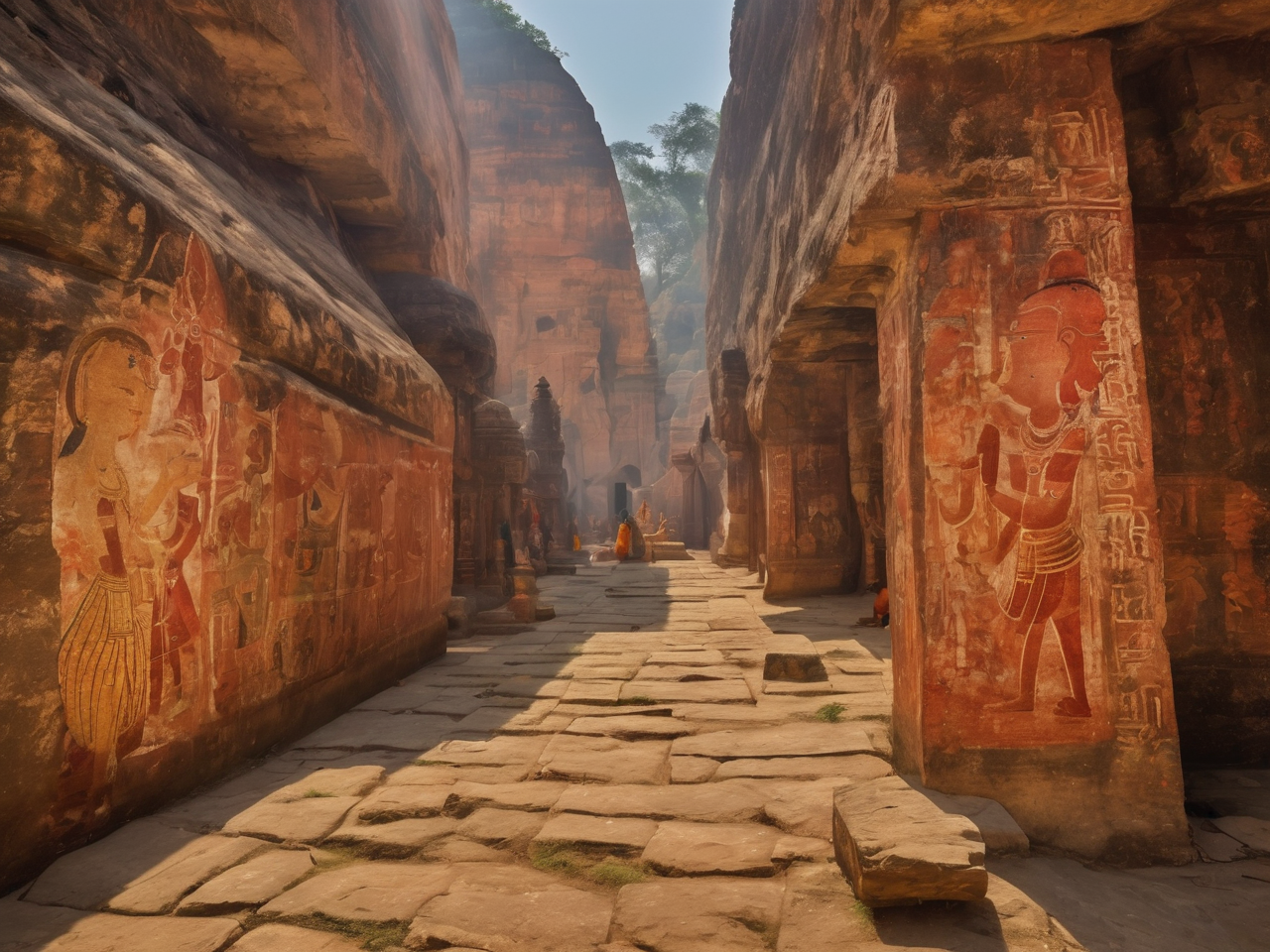
Preservation Efforts: Recognizing the importance of preserving this cultural heritage, efforts have been made to document, study, and conserve Ayodhya's rock paintings. Archaeological surveys, conservation projects, and educational initiatives aim to safeguard these ancient artworks for future generations, ensuring that they continue to enrich our understanding of Ayodhya's artistic and cultural heritage.
In conclusion, painting and rock painting are integral components of Ayodhya's artistic heritage, reflecting its rich cultural tapestry and historical significance. From vibrant murals adorning temple walls to ancient rock paintings depicting scenes from prehistoric times, these artistic expressions serve as testaments to Ayodhya's enduring legacy as a cradle of art and culture.


